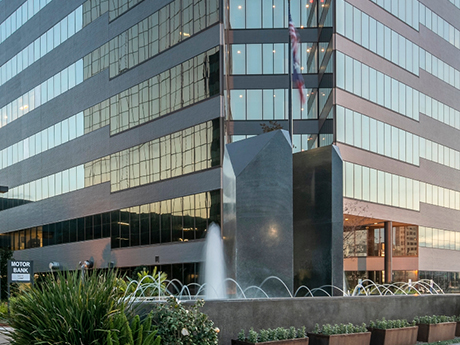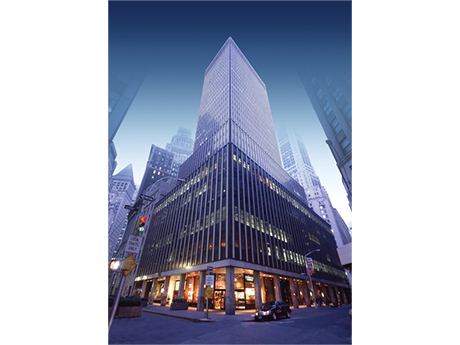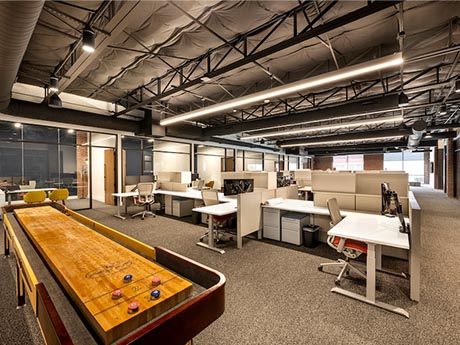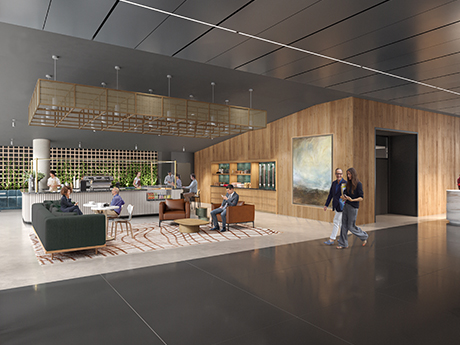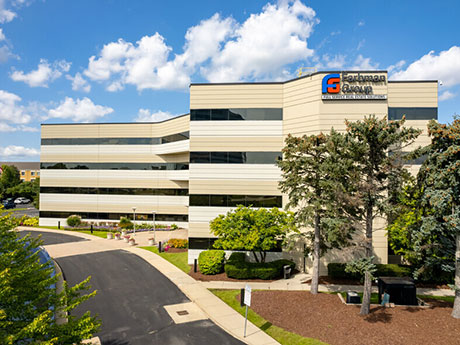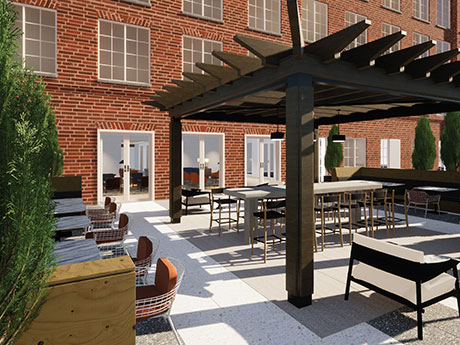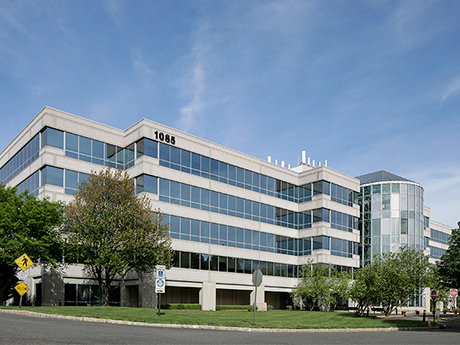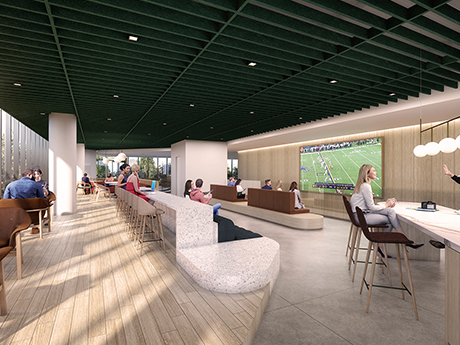By Nicole Schmidt, managing partner, Oberon Securities Whether it’s traditional bank loans, private equity or securitized financings, it’s clear that a large number of commercial property owners are facing serious credit issues. Many office tenants continued making rent payments even through COVID-19, and the work from home trend has now left them with excess space. But as leases expire, they are downsizing their physical footprints, leaving landlords with significant vacancies amid very soft demand. According to a November 2023 article in The Wall Street Journal, “Only one out of every three securitized office mortgages that expired during the first nine months of 2023 was paid off by the end of September, according to Moody’s Analytics. That is the smallest share for the first nine months of any year since at least 2008 and well below the nadir reached in 2009, when 47 percent of these loans got paid off.” Add to that the impact of WeWork’s recent bankruptcy filing and projected high office vacancy rates in New York City and other major markets — plus higher interest rates — and the inevitable result is lower valuations that don’t support existing levels of debt on many properties. Higher vacancy rates, higher …
Office
By Ryan Kimura, senior vice president of strategic partnerships, Premier The changing landscape of work and the future of the office remains in flux, leading to a reduced demand for office space in major metropolitan areas throughout the country. This shift has rendered many office buildings underutilized and obsolete, prompting developers and investors to seek alternative uses for these structures. Simultaneously, urbanization continues to grow, fueling the demand for housing and a need for innovative multifamily solutions. Office-to-multifamily conversions provide an answer to both challenges, repurposing office spaces into much-needed residential units while allowing investors to capitalize on demand. This perfect storm of reduced office demand, increased housing needs and favorable regulatory conditions has driven the popularity of office-to-multifamily conversions, positioning them as a sustainable strategy for urban development. These conversions began to surge in popular metro areas during the height of the pandemic as uncertainty surrounded the return to the workplace. Fast forward three years later and office conversions are still booming — especially in the Dallas market. The region, which has witnessed some of the largest population increase in the country over the past five years, has also had a double-digit office vacancy rate in its downtown area …
By Wes Snow, co-founder and CEO, Ascendix Technologies For the first time since the COVID-19 pandemic began, offices are 50 percent occupied nationally as companies push harder for returns to their buildings — which is good news. Still, amid this encouraging development, inflation, interest rate hikes and general fears of recession might impede businesses planning to align their office rent expenses with the pre-pandemic rates. Can businesses optimize the space they’re already utilizing without renting more? At Ascendix Technologies, a company that has been specializing in custom real estate software development for two decades, we’ve seen a variety of space extension practices applied by office owners and managers. Here are some methods that users can employ too maximize efficiency within their existing footprints. Implement Open Floor Plans Not only do wall-less spaces encourage collaboration among teams and reduce the need for spacious individual offices, they also increase flexibility in terms of how space is utilized. Reconfiguring spaces is easy with movable walls and modular furniture and represents an option that helps growing businesses align their changing needs with the spaces they’ve got. Upgrading open-floor space management with automation is another viable option. With a technology like floor management software or …
By Taylor Williams Office owners have spent the last two-plus years undertaking every creative measure they can fathom — and afford — to get tenants and their employees to legitimately want to come back to their buildings. From investing in upgrades to physical amenities to hiring hospitality-minded professionals for property activation to offering personalized incentives, nothing has been out of bounds when it comes to recouping occupancy. Enough time has now passed such that owners can judge the extent to which their ideas and initiatives have worked. Of course, the goalposts for what defines success in the office sector have shifted radically during that time. Profit margins and forecasts have shrunk as 60 to 70 percent occupancy three to four days a week now starts to look pretty good, all other factors being held equal. It’s simply a different world. “We are never going back to pre-pandemic ways,” says Ami Figg, senior leasing specialist at Houston-based Hartman. “What COVID-19 has done for the office market is equivalent to what September 11 did for the travel industry. There will always be a need for traditional office space, but it’s changed forever, so it’s upon us as landlord and tenant reps to …
By Jennifer Hopkins, MBA and Olivia Czyzynski, SVN Chicago Commercial The commercial real estate (CRE) industry has traditionally been relatively stable but can be impacted by the economy with normal ups and downs based on economic fluctuations. However, when COVID-19 hit, it was unprecedented and something the world had not seen in many years. The CRE industry started preparing for the changes that came along, including business shutdowns and many employees working from home. Although it was expected that the retail market would be the hardest hit sector, it turned out that the office market ended up being significantly impacted. The overall issues and pending work-from-home approach have had a major ripple effect on office markets across the nation. The Chicagoland market was impacted particularly hard, and this included the suburban Chicago markets. Chicagoland is broken out into several main commercial hubs: the city of Chicago, the East-West Corridor, the O’Hare market, the Northwest suburbs and the North suburbs. According to CoStar, office vacancy rates increased in all these markets. In 2020, the vacancy rates ranged from 7 to 20 percent, but currently stand at 18.8 percent, 17.3 percent, 16.9 percent, 23.2 percent and 11 percent, respectively. While no market …
By Andy Gutman, Farbman Group It’s no secret that the last few years have been a turbulent time for the office market nationally. While Detroit has fared somewhat better than some other cities across the Midwest, the same pandemic (and now post-pandemic) pressures have led to a higher-than-usual degree of uncertainty and volatility. Here in the early part of 2023, it’s a good time to take a step back and look at how the Detroit office landscape is changing, how it’s not changing and what might be in store throughout the rest of the year — and beyond. This is a unique time because there’s still a tremendous amount of uncertainty to factor into the commercial real estate market in general, and into office specifically. There are a lot of brands and businesses who either have not made up their mind about their office structure and needs going forward, or are still in an experimental post-pandemic period where they are trying to figure out the balance that works for them in terms of remote or hybrid work options and brick-and-mortar configurations. Until more of that uncertainty is resolved, a clear picture of the medium- and long-term prospects for the office …
By Artie Kerckhoff and Joshua Allen, CBRE For businesses, the conversation around the return to office has shifted. Most companies find themselves considering how to entice workers back instead of when to call them back. It’s an interesting dynamic, born out of stopgap remote-working policies and catalyzed by an employee’s market. Where does this leave the St. Louis office market? The metro’s overall office vacancy rate remained steady at 12.9 percent at the end of the third quarter. Yet, leasing velocity has shown significant improvement with leases signed at newly constructed buildings like Forsyth Pointe & Commerce Tower in Clayton and Edge@West in Creve Coeur. In addition, a handful of tenants have signed new leases at existing prime Class A, amenity-rich buildings such as Centene Plaza C Building, The Plaza in Clayton and Shaw Park Plaza. The reason for this uptick is a trend that’s playing out in St. Louis and across the country: an overall flight to quality. Prime at a premium At the onset of the pandemic, office users signed short-term extensions and took a wait-and-see approach to get through the immediate crisis. Now, as those extensions expire, they’re migrating to prime Class A office space with collaborative, …
By Ken Colao, president and CEO, CNY Group Whether you’re on the Jersey Parkway or the Turnpike, you’ve undoubtedly driven past commercial buildings and office parks that have stood in the Garden State for decades. But the age of many of these structures is starting to cause problems. Earlier this year, JLL released a report in which the real estate firm estimated that 57 percent of suburban office space nationwide is old enough to be considered functionally obsolete. In New Jersey, specifically, that figure rises to 72 percent, among the highest in the nation. Based on two decades worth of construction experience in New Jersey and New York, CNY Group believes the two most likely outcomes for these structures involve upgrades to true Class A offices or conversion to life sciences facilities. Keeping Offices Intact With a growing number of people migrating out of urban cores, suburban office developers are revitalizing their properties to attract new tenants. When employees began moving away from city centers, employers didn’t particularly follow them, but that trend could change. Businesses will decrease their real estate footprints in urban areas unless costs of occupancy are reduced, safety is maintained and environmental standards and practices are …
By Taylor Williams Success in today’s office sector is all about creating incentives. Some companies, from small professional services outfits to tech giants like Salesforce and Airbnb, have completely capitulated to remote work and have aggressively slashed their office footprints. Others remain dogged in their commitments to nonresidential (and nonretail) workspaces. What works for one company may not work for its competitors, and there remains a fundamental need for at least some traditional office space across all major markets. Against this backdrop, what separates the winners from the losers is the ability to create a draw, to give people legitimately good reasons to get up earlier, spend more time getting ready, endure traffic, put costly mileage on their cars, then deal with whatever quirky goings-on define their office experience. Needless to say, this can be a tough sell, especially for employees with families and suburban commutes. Which is why owners, both of businesses and of the office buildings that house them, are getting creative. These corporate leaders and landlords are working in tandem to ensure that the spaces meet the precise needs of their workforces, from design and layout within the suite to access to onsite amenities and surrounding retail, …
By Jason Baker of Baker Katz It’s amazing how quickly things can change. Just a few short months ago, the commercial real estate outlook was generally positive. Both in Texas and nationally, retail sales were proving to be fairly resilient to the rising inflation and economic turbulence that have characterized most of 2022. Despite low consumer confidence, strong fundamentals and a retail sector riding the high of a post-pandemic boom provided plenty of reasons for optimism. That has all changed in the last 60 to 90 days. Prevailing positivity has recently given way to concern, and sentiment from within the industry has clearly shifted. High interest rates have made it virtually impossible to develop any type of commercial project, and persistent supply chain constraints and ongoing hikes in costs of construction materials have further exacerbated this challenge. With interest rate increases come higher cap rates, which complicates sellers’ efforts to move their assets while values are this fluid. To put the impact of rising rates into perspective, interest payments on commercial real estate have in some cases increased five-fold in just the last few months. The impact of this activity on retail real estate during the all-important holiday shopping season …
Newer Posts


